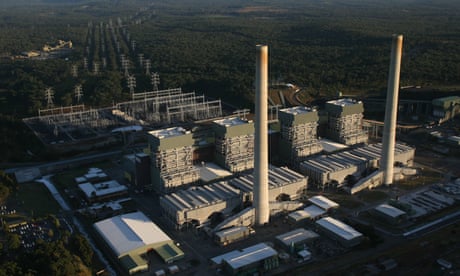- by foxnews
- 04 Apr 2025
Early closure of Australia’s largest coal-fired plant could create electricity shortages without grid upgrades
Early closure of Australia’s largest coal-fired plant could create electricity shortages without grid upgrades
- by theguardian
- 14 Apr 2022
- in news

Plans to accelerate the closure of Australia's biggest coal-fired plant have the potential to create electricity shortages in three states unless enhancements to the grid proceed and new generation and storage capacity is added, the market operator said.
The shortfall assessment is contained in an updated electricity statement of opportunities (Esoo) report. It was prompted by Origin Energy's February decision to bring forward closure of its 2,880-megawatt Eraring plant in New South Wales by seven years, to 2025.
The Australian energy market operator (Aemo) said that taking into account only existing and committed developments:
"The retirement of Eraring power station, without replacement investments, could lead to a reduction in the reliability of the national electricity market (Nem), particularly in NSW," said Merryn York, Aemo's executive general manager for system design.
On the face of it, the pipeline of new energy projects is huge - with 138 gigawatts in potential projects, or more than double the existing large-scale capacity of just under 60GW. Since the annual Esoo report in August, NSW alone added a net 1GW of new capacity, and Queensland 417MW.
York said if these anticipated investments and "projects in the [integrated system plan] and NSW government's energy roadmap" went ahead according to schedule, "forecast reliability outcomes in the Nem would meet or exceed the reliability standard in 2025-26".
Australia's electricity industry is fastest decarbonising sector of the economy, with almost of one-third of power supplied by zero-emissions renewable energy. Regulators, however, have to prepare for the ongoing influx of low-cost solar and wind energy, which is pushing out coal and gas-fired plants faster than companies had planned.
Federal energy minister Angus Taylor last week proposed requiring generators to give five years' minimum notice before closing power stations. But that suggestion, up from three-and-a-half years, gained little traction - not least because it would be difficult to enforce if a company had a major plant failure or went broke.
Aemo's alert comes ahead of the release of its quarterly energy dynamics report at the end of April, which is likely to show electricity prices continuing to rise.
In January, the operator said wholesale prices were rising because of higher costs for gas and coal. Independent market watchers are also showing recent, sharp rises in power prices.
Unlike steeper petrol prices, the prospect of larger power bills has so far had little attention in the run-up to the federal election.
In last month's budget, the Morrison government touted its success in "delivering on its commitment to a secure, affordable, and reliable energy supply and [achieving] its goal of wholesale electricity prices under $70/MW-hour."
On Wednesday, however, spot prices were $300/MWh or higher in all four mainland states in the Nem.
NSW plant closures include the Vales Point power station, scheduled to shut in 2029-30. Victoria's potential crunch comes with the 2028-29 closure of the Yallourn power plant in the Latrobe Valley. And Queensland's possible shortfall is related to reduced availability of supplies from NSW, Aemo said.
But the risk of generation gaps should decrease: NSW alone is anticipated to have another 1.7GW of large-scale wind and solar farms and new grids links operating by 2025.
"NSW's reliability will further improve following the completion of the Sydney Ring [July 2027] and HumeLink [2026] transmission projects," York said.
"[This will allow] more southern NSW generation capacity, such as Snowy 2.0, to reach Sydney, Newcastle and Wollongong during times of supply scarcity."
A clutch of new batteries, including the "Waratah super battery" with 1.4GW-hours of storage proposed by Origin, should also provide support for the grid by the time Eraring closes.
Matt Kean, NSW energy minister and treasurer, said Aemo's updated Esoo report showed "the resilience embedded in the NSW electricity system".
"It shows that by legislating the NSW electricity infrastructure roadmap, Australia's largest renewable energy plan, our state is well placed to not only keep the lights on, but also attract investment, lower energy prices and create jobs and economic prosperity," Kean said.
- by foxnews
- descember 09, 2016
'I traveled for an entire year for free - and saved $15K'
Hailey Learmonth explored Australia without paying rent, thanks to pet sitting. She saved $15,000, lived on farms, and embraced remote work to travel on a budget.
read more


